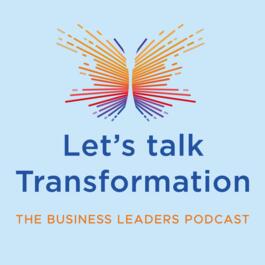
The Empathy Dilemma with Maria Ross
“Empathy flows both ways and it’s not just the leader’s job or the organization’s job to show empathy.” In today’s rapidly evolving business landscape, one quality stands out as both a humane virtue and a strategic advantage: empathy. Maria and I delve into the dilemmas surrounding empathy and empathy in leadership, which are powerful tools for fostering engagement, innovation, and customer loyalty while simultaneously boosting retention and revenue. We discuss the multifaceted nature of empathy by distinguishing between cognitive empathy—understanding another’s thoughts—and emotional empathy—connecting with their feelings. We also discuss common misconceptions about empathy, which can lead to burnout and ineffective leadership. We go back to the necessity for human connection to create meaningful relationships and workplaces. Empathy is about connection - understanding other people’s thinking better can result in compromise and fruitful discussions – and can leverage healthy challenge. both these things are necessary for innovation, productivity and ultimately competitive advantage. Both employees and leaders share the responsibility of navigating workplace challenges with empathy, especially in hybrid settings. Personal agency, self-awareness, and decisiveness are vital, and as automation increases, the relationship between empathy and AI becomes more pertinent. Leaders must continue to develop human skills like emotional intelligence to remain relevant. Maria shares her insights, models and experience of leading with heart and head—because empathy isn’t just about understanding; it’s about building a brighter, more connected future ! The main insights you'll get from this episode are : - What is empathy? At work, an accessible definition is the ability to see, understand, and, where appropriate, feel another person’s perspective and use that information to act with compassion. - Compassion is empathy in action: it is not always necessary to feel, we can use cognitive empathy to imagine what others are feeling. This can then lead to emotional empathy, i.e. experiencing an increased heart rate when feeling someone else’ anger. - Empathy at work should be seen as a means to gather information – to understand the context and move forward with the right step, e.g. making an informed decision by listening. - The common misconceptions for leaders are that ‘doing empathy wrong’ means that it goes astray and there are no benefits – it is not about being nice or caving in to unreasonable demands but about balancing decision-making and supporting other people. - Empathy is about connection not conversion - understanding other people’s thinking better can result in compromise and fruitful discussions – and can leverage healthy challenge. - There are five pillars of effective and empathetic leadership: self-awareness, self-care, clarity, decisiveness, and joy. Leaders must recognise their blind spots, emotional triggers and patterns and understand the difference between self-care and self-maintenance to resource themselves and react well. - Empathy centres on balance, but the work/life balance is a myth – it is more of a work/life integration, constantly adjusting on different levels: ‘either or’ leadership in terms of efficiency vs. empathy is also a myth as it is not a binary phenomenon. - Clarity paves the way to empathy in that leaving a team in limbo, unsure what they are doing and where they are going, is unempathetic; things must be clearly defined; candour must be kind; and feedback constructive. - Covid proved...
From "Let's talk Transformation : The business leaders podcast"


Comments
Add comment Feedback